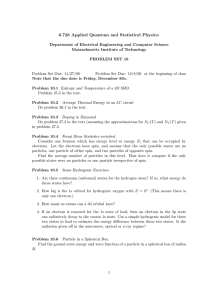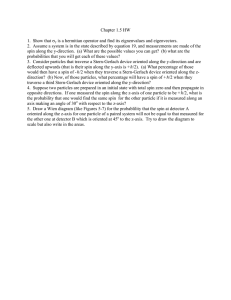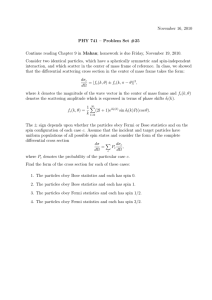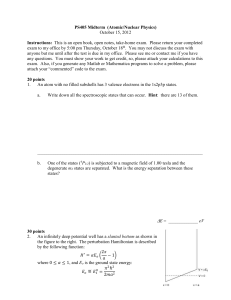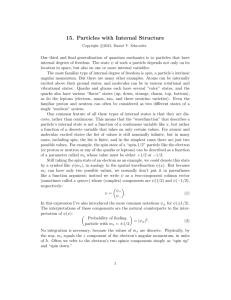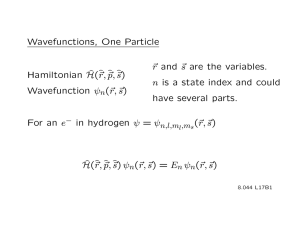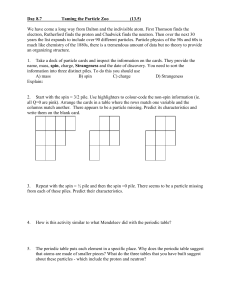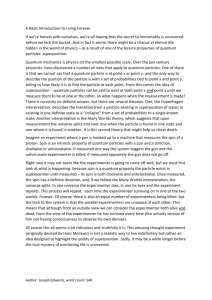hw-4
advertisement
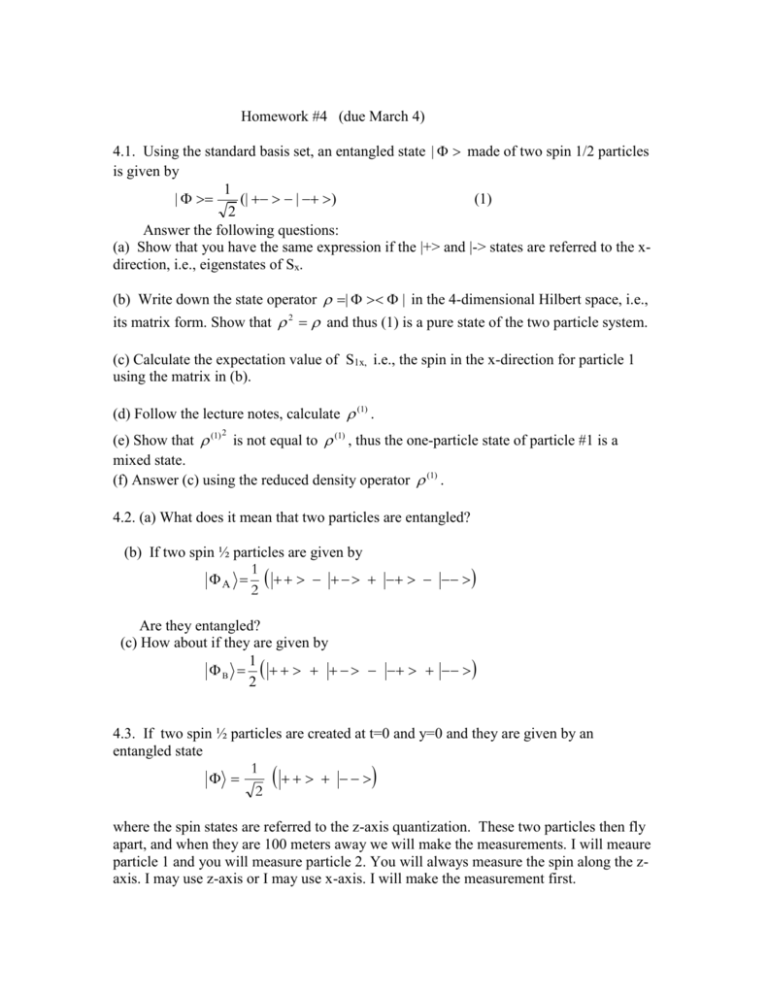
Homework #4 (due March 4) 4.1. Using the standard basis set, an entangled state | made of two spin 1/2 particles is given by 1 (1) | (| | ) 2 Answer the following questions: (a) Show that you have the same expression if the |+> and |-> states are referred to the xdirection, i.e., eigenstates of Sx. (b) Write down the state operator | | in the 4-dimensional Hilbert space, i.e., its matrix form. Show that 2 and thus (1) is a pure state of the two particle system. (c) Calculate the expectation value of S1x, i.e., the spin in the x-direction for particle 1 using the matrix in (b). (d) Follow the lecture notes, calculate (1) . (e) Show that (1) is not equal to (1) , thus the one-particle state of particle #1 is a mixed state. (f) Answer (c) using the reduced density operator (1) . 2 4.2. (a) What does it mean that two particles are entangled? (b) If two spin ½ particles are given by 1 A 2 Are they entangled? (c) How about if they are given by 1 B 2 4.3. If two spin ½ particles are created at t=0 and y=0 and they are given by an entangled state 1 2 where the spin states are referred to the z-axis quantization. These two particles then fly apart, and when they are 100 meters away we will make the measurements. I will meaure particle 1 and you will measure particle 2. You will always measure the spin along the zaxis. I may use z-axis or I may use x-axis. I will make the measurement first. (a) If I measure along the z-axis and I got / 2 , what will you get after me? What is the state vector after your measurement. (b) Instead, if I measure along the x-axis and I got / 2 , show that you will get either / 2 or - / 2 , with equal probability. (c) Suppose you get / 2 in (b), what is the state of the two particles after your measurement? (d) If next I measure the spin along the z-axis again, what will I get? (e) If then you measure the spin, what will you get?
